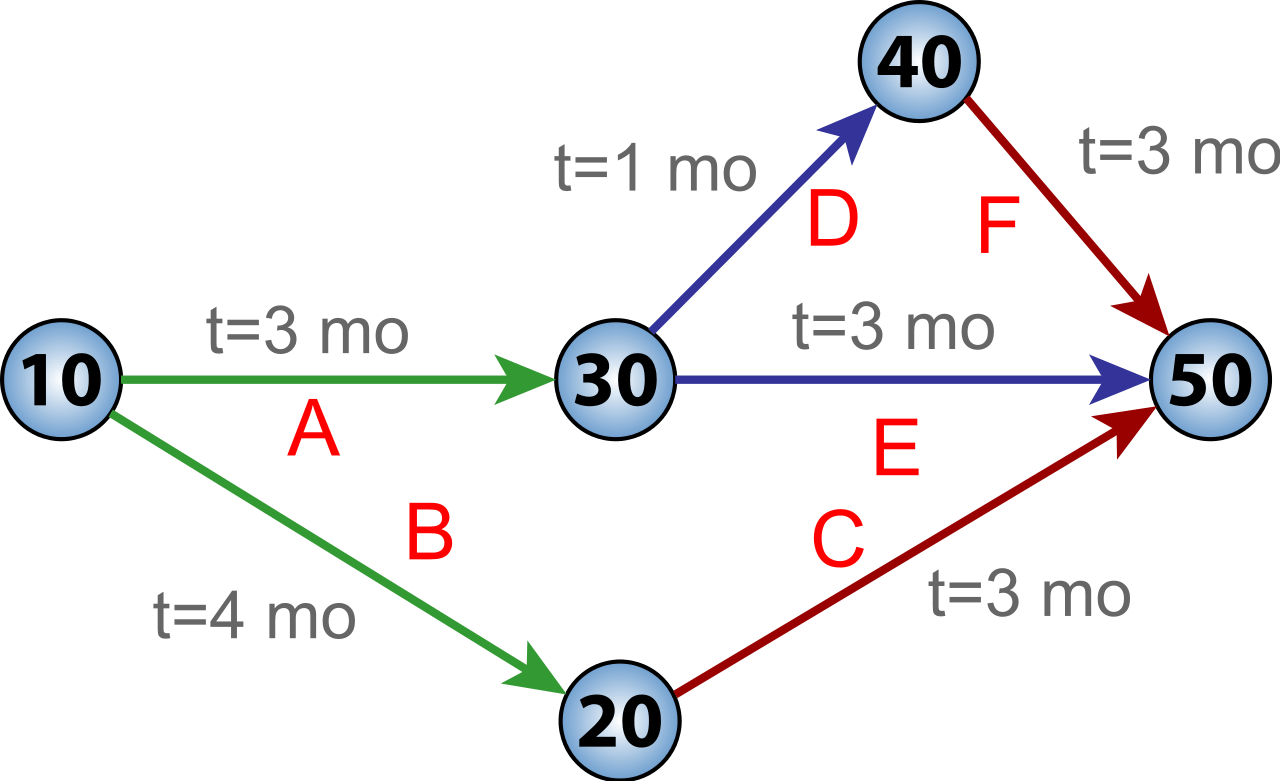
Project Evaluation Review Technique (PERT)
A tool used to identify the time required to finish a particular task or activity
What is Project Evaluation Review Technique (PERT)?
In project management, the Project Evaluation Review Technique, or PERT, is used to identify the time it takes to finish a particular task or activity. It is a system that helps in the proper scheduling and coordination of all tasks throughout a project. It also helps in keeping track of the progress, or lack thereof, of the overall project. In the 1950s, the Project Evaluation Review Technique was developed by the US Navy to manage the Polaris submarine missile program of their Special Projects Office.

Knowing the time it should take to execute a project is crucial, as it helps project managers decide on other factors such as the budget and task delegation. No matter how big or small a project is, estimates can be too optimistic or pessimistic, but using a PERT chart will help determine realistic estimates.
Creating a PERT Chart
A flowchart is used to depict the Project Evaluation Review Technique. Nodes represent the events, indicating the start or end of activities or tasks. The directorial lines indicate the tasks that need to be completed, and the arrows show the sequence of the activities.
There are four definitions of time used to estimate project time requirements:
- Optimistic time – The least amount of time it can take to complete a task
- Pessimistic time – The maximum amount of time it should take to complete a task
- Most likely time – Assuming there are no problems, the best or most reasonable estimate of how long it should take to complete a task.
- Expected time – Assuming there are problems, the best estimate of how much time will be required to complete a task.
Here are several terms used in a PERT chart:
- Float/Slack – Refers to the amount of time a task can be delayed without resulting in an overall delay in completion of other tasks or the project
- Critical Path – Indicates the longest possible continuous path from the start to the end of a task or event
- Critical Path Activity – Refers to an activity without any slack
- Lead Time – Refers to the amount of time needed to finish a task without affecting subsequent tasks
- Lag Time – The earliest time by which a successor event/task can follow a prior event/task
- Fast Tracking – Refers to handling tasks or activities in parallel
- Crashing Critical Path – Shortening the amount of time to do a critical task
To implement a PERT chart:
- Identify the different tasks needed to complete a project. Make sure to add these in the right order and indicate the duration of each task.
- Create a network diagram. Use arrows to represent the activities and use nodes as milestones.
- Determine the critical path and possible slack.
Advantages of PERT
Here are several benefits of using PERT in project management:
- It helps maximize the use of resources.
- It makes project planning more manageable.
- It’s useful even if there is little or no previous schedule data.
- It enables project managers to better estimate or determine a more definite completion date.
Disadvantages of PERT
Like any other method, PERT comes with its share of limitations:
- In complex projects, many find PERT hard to interpret, so they may also use a Gantt chart, another popular method for project management.
- It can be tedious to update, modify, and maintain the PERT diagram.
- It entails a subjective time analysis of activities and, for those who are less experienced or are biased, this may affect the project’s schedule.
Additional Resources
Thank you for reading CFI’s guide to Project Evaluation Review Technique (PERT). To keep learning and advancing your career, the additional CFI resources below will be useful:
